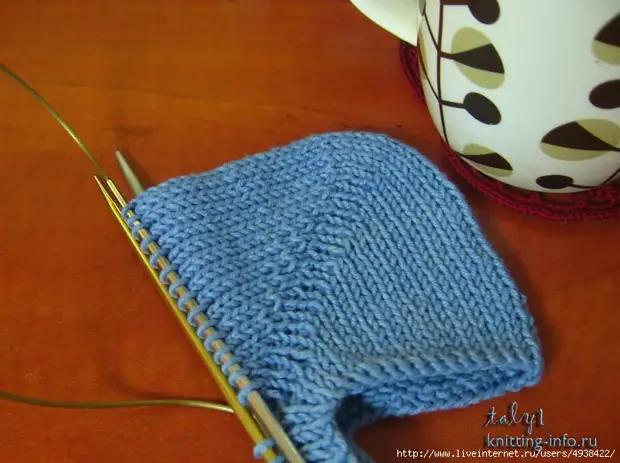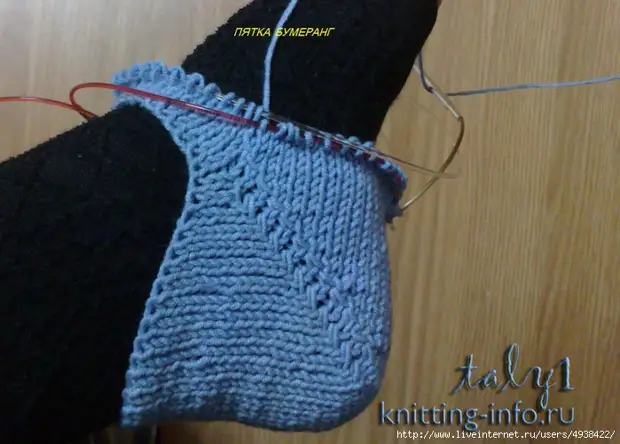
The heel "Boomerang" knits on the loops of the 1st and 4th knitting needles facial stroke shortened rows. If the sock knits with an openwork or jacquard, then for 1- 2 rows before the start of the impact of the heel of the loop of these spokes is recommended to knit facechair, because The heel turns into shorter than with traditional knitting, and the upper part continues the pattern. By sticking the top of the sock, we divide all the loops in half. Loops 2y and 3rd needles leave, and on loops 1st and 4th knitting knit heel facial stroy
The 1st row is facial, we have a loop on the left needle to the end of a row face.
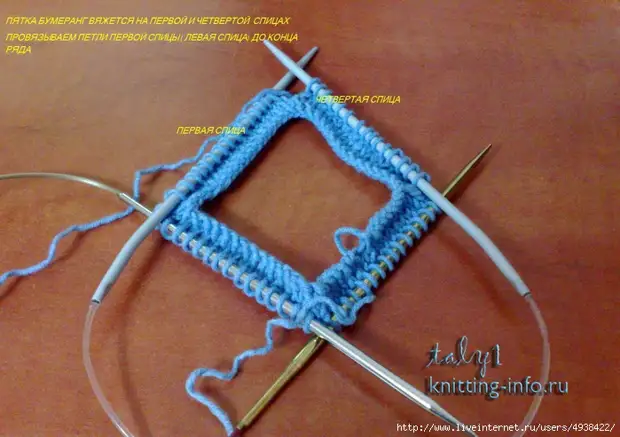
Turn knitting
2nd row - invalid. We divide the loops on which we will knit the heel into 3 parts. I got such a calculation - it was scored 60 loops, knit the heel on half of the loop = 30. We divide them into 3 parts = by 10. It is better to mark them with color thread. We have turned 1 central part of the heel and 2 side.
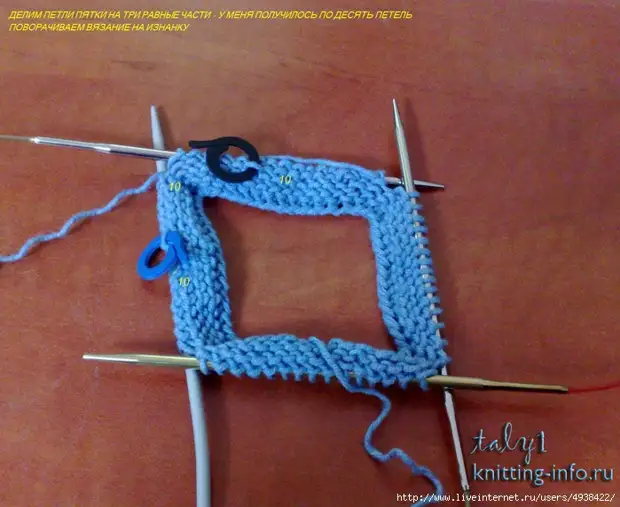
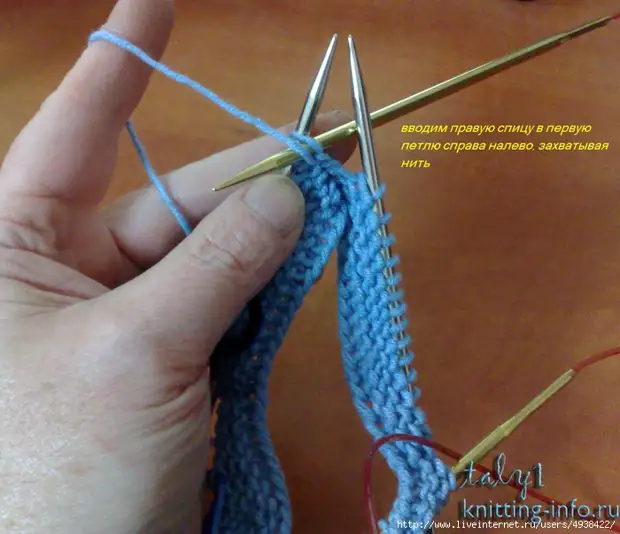
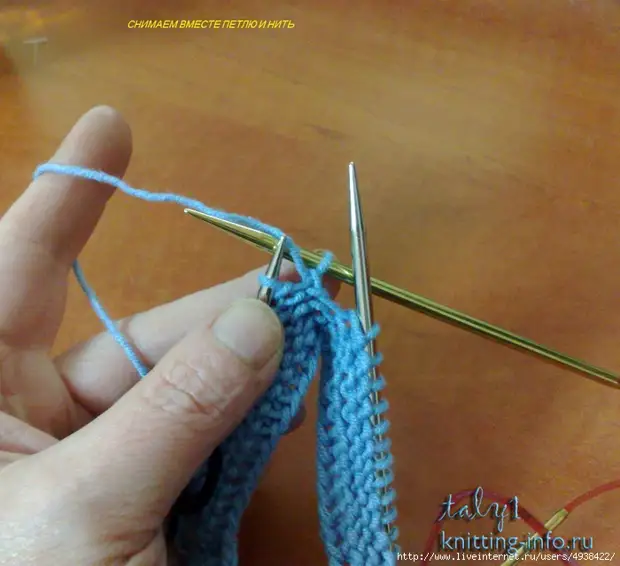
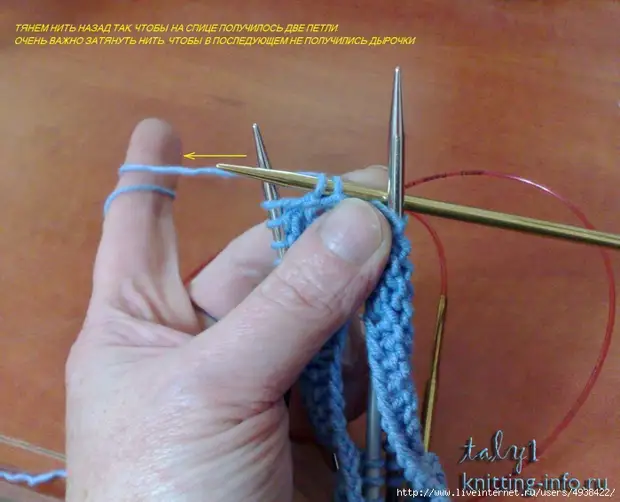
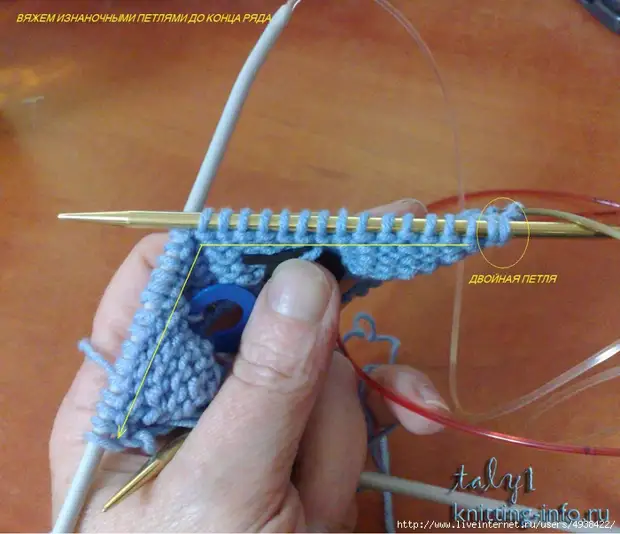
3rd row - facial. At the beginning of the row, we make a double loop again. Introduce the right needle in the first loop to the right left. Working thread behind the needle, so it should be thrown onto the needles.
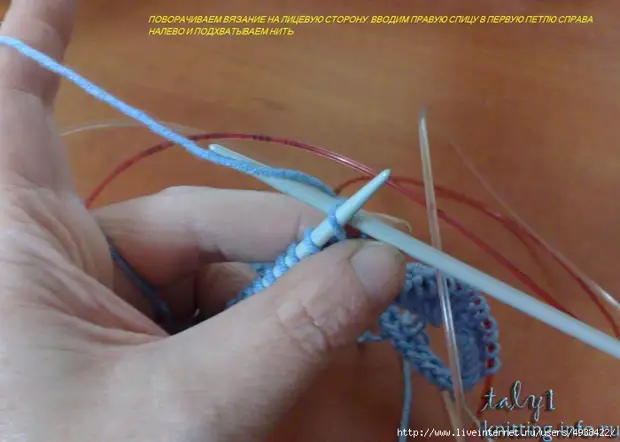
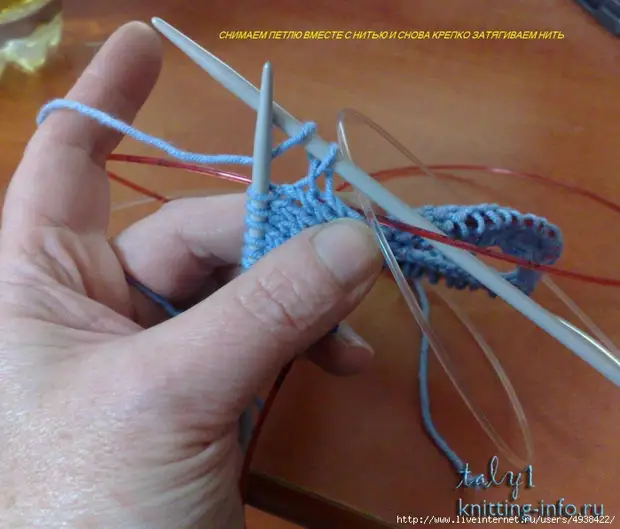
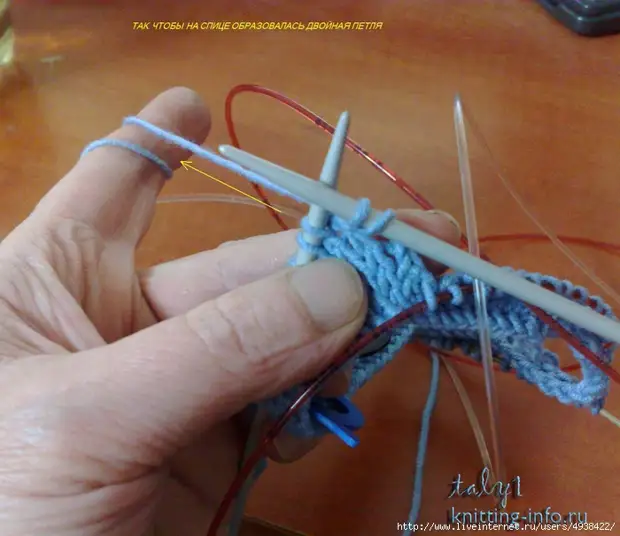
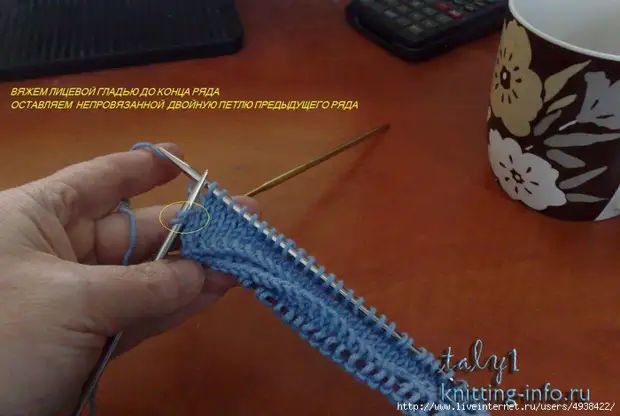
In addition to the double loop of the previous row. She leave it on the needle.
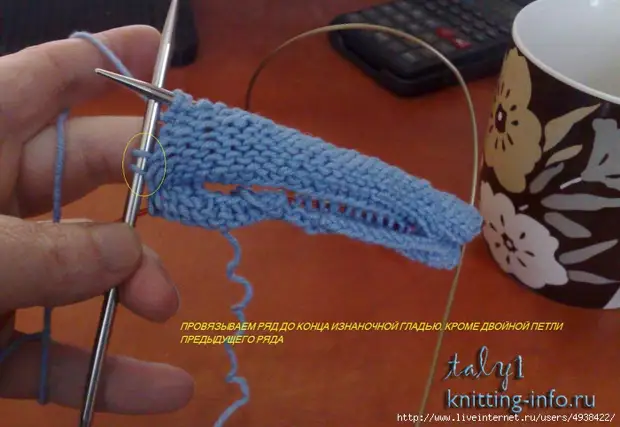
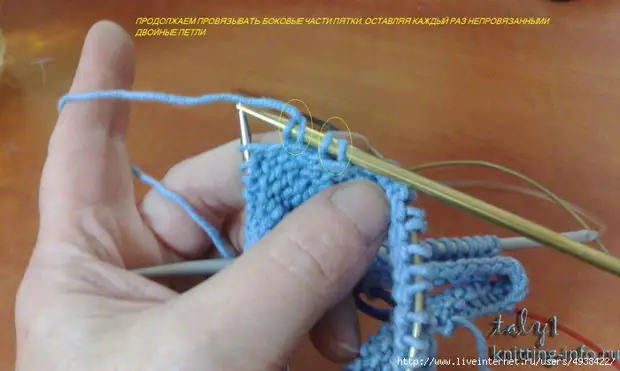
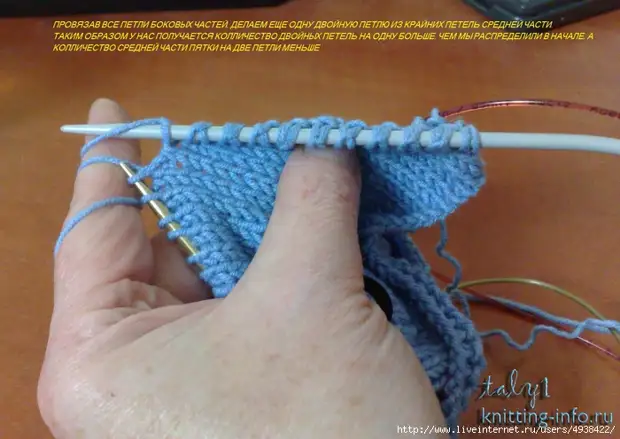
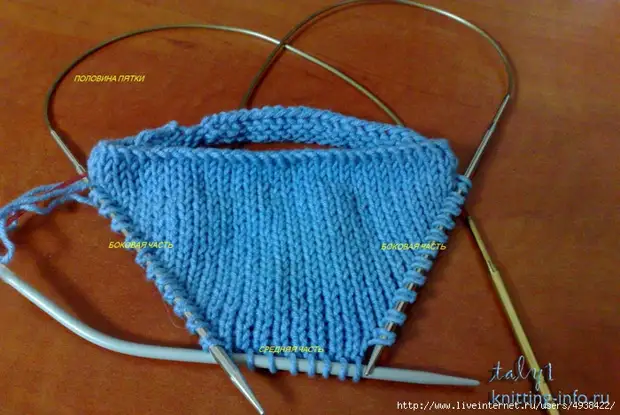
Next, knit 2 circular rows on all hinges, while double hinges are tied as one. If the upper part of the sock knit pattern, then we continue the pattern.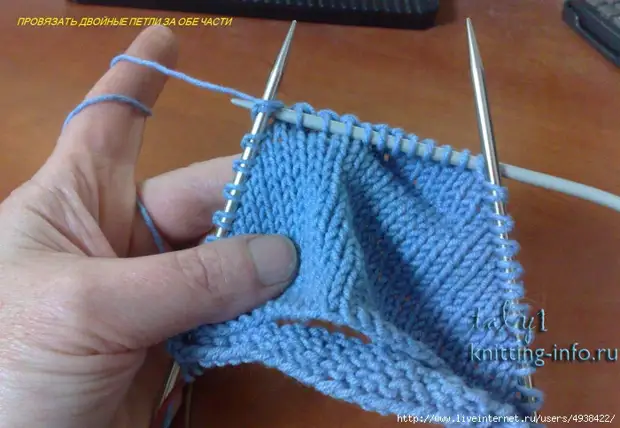
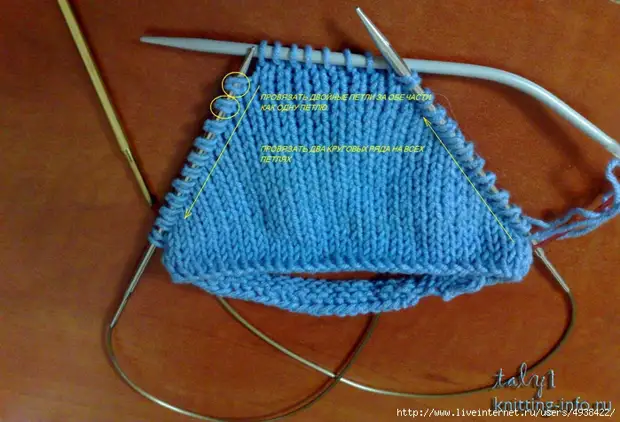
1st row - facial. Slip all the loops of the central part. Rotate knitting.
2nd row - Pouring - double loop, all loops of the central part of the heel, turn knitting.
3y row and all subsequent knitting according to the following algorithm: double loop, all loops of the central part of the heel to a double loop, penetrate a double loop for both parts, like one, penetrate the next loop in the drawing, turn knitting.
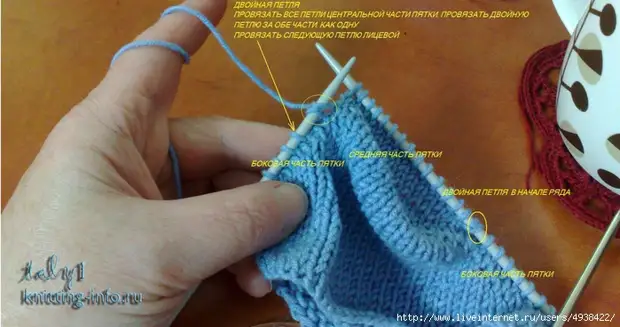
Well, it is ready, the heel "Boomerang".
In this heel, double hinges were sought differently, so they were not as relief. I liked it so much.
